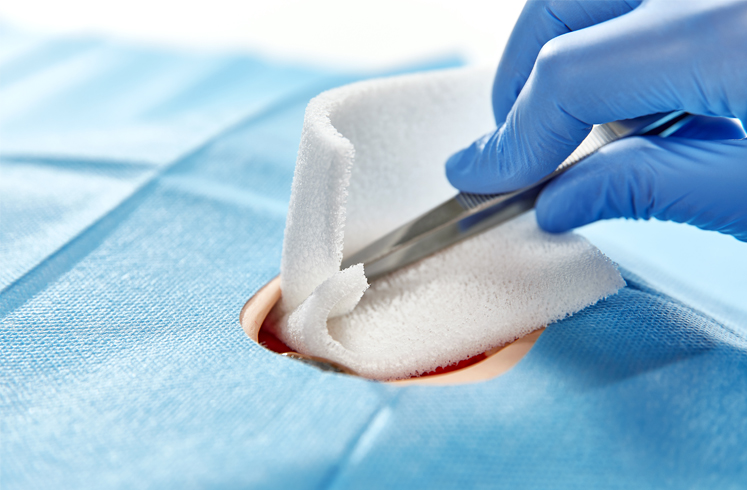Alongside innovative products, Freudenberg Performance Materials is also showcasing its approach to sustainable woundcare at Compamed in Düsseldorf from November 15 – 18, 2021. Active worldwide, the manufacturer of multi-layer material compositions consisting of hydrophilic PU foams and hydroactive nonwovens will be welcoming visitors to Booth F18 in Hall 14.

“Sustainability is firmly anchored in Freudenberg Performance Materials’ strategy. That is why we engage in pioneering work to enable our customers in the medical industry to launch more sustainable products on the market,” Dr. Henk Randau, SVP & General Manager Global Business Division Healthcare, said. The company has decades of experience in developing sustainable solutions. Freudenberg Performance Materials pioneered PET recycling in the early 1990s, for example, and today recycles some 7 million PET bottles per day.
Biodegradable and other sustainable solutions
Freudenberg Performance Materials designed the ECO-CHECK label to endorse particularly sustainable products. The company offers its healthcare customers two outstanding solutions to design sustainable wound plasters. These plasters use bio-based raw materials that allow biodegradation in an industrial composting setting after the product has been used.
– M 1701 for traditional woundcare plasters comprises 100% polylactic acid derived from natural resources and offers good woundcare characteristics.
– M 1714 with superior absorption for more challenging wounds consists of a mix of bio-based fibers derived from natural sources and exhibits a smooth wound contact layer. The product has been evaluated for industrial compostability and conforms with ISO 13432, which facilitates the application for certificates concerning product biodegradability.

In addition, Freudenberg Performance Materials’ silicone coated foams with its patent-protected technology combine the sustainable aspects with a number of improved features. Reducing the number of process steps in wound dressing manufacture reduces production complexity, thereby avoiding waste, saving energy and simplifying the supply chain. At the same time, the solution maintains all the advantages of a pure foam dressing without a silicone layer, such as free swelling and prevention of exudate pooling in the wound bed, while eliminating the disadvantages of solutions with standard silicone adhesive layers. Seen from a nursing perspective, advantages include higher flexibility that enables optimal wound bed contouring and the reduced risk of infection due to the prevention of exudate pooling.
For the first time, FPM is also showcasing prototypes featuring this technology in the form of a bordered dressing with a silicone adhesive border. The option to select an extra-strong silicone border complements these product benefits. This enables longer wear times, thus generating less waste.
More effective cleansing results and greater patient comfort
Freudenberg Performance Materials is also showcasing an innovative hydrophilic debridement foam that offers the following advantages:
– Use in wound cavities: The foam is soft and flexible throughout, including at the edges. It is ideal for cleansing deep and hard-to-reach wounds.
– Better cleansing results and reduced risk: Thanks to its large pores, the foam also easily picks up fibrin coatings and dried exudate. Unlike conventional textile construction, there is no risk of fibers being left behind in the wound.
– Greater patient comfort: The hydrophilic PU foam achieves a better cleansing result with reduced pressure, thereby increasing patient comfort.





